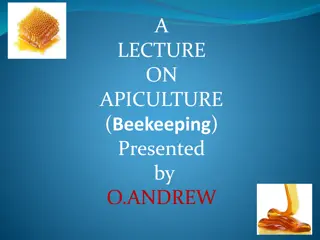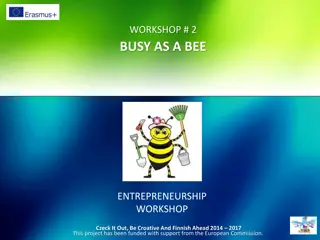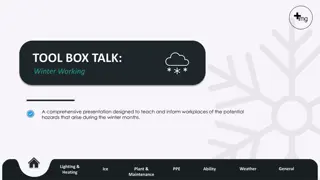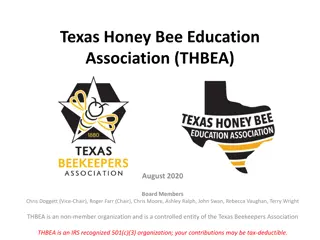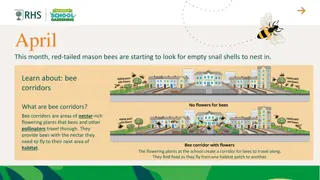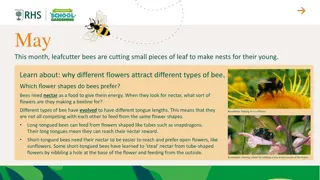Understanding Bee Behavior in Winter Months
As November approaches, bees become less active due to cold weather and limited food sources. Different types of bees have unique strategies to survive the winter, from huddling in hives to finding shelter in underground nests. Learn how bees cope during the colder months and explore their winter habitats in this informative guide.
Download Presentation

Please find below an Image/Link to download the presentation.
The content on the website is provided AS IS for your information and personal use only. It may not be sold, licensed, or shared on other websites without obtaining consent from the author. Download presentation by click this link. If you encounter any issues during the download, it is possible that the publisher has removed the file from their server.
E N D
Presentation Transcript
November This month, very few bees are still flying, but you may still see buff-tailed bumblebees feeding on nectar and carrying pollen. Learn about: what happens to bees in winter. Have you ever noticed that as we get closer to winter, you spot fewer bees? To be able to fly, bees need to have warm flight muscles to flap their wings. When the weather gets colder, these muscles don t get warm enough and flying becomes very difficult. There are also fewer flowers for bees to visit in the colder months, so finding food is much harder.
Different types of bee have different ways of coping in the winter months. Bumblebees Solitarybees Honeybees Bumblebee burrowing in ground Leafcutter bees nesting in a bee hotel Bee hives Female worker bees feed on pollen and store honey ready to stay in their hive over winter. They huddle around the queen bee to keep her warm. They also move around the hive in their cluster to stay warm and reach their honey stores. Some of these worker bees will die during the winter. Old queen bees, male and worker bumblebees do not survive the colder winter months. Only newly-hatched and mated bumblebee queens survive the winter, feeding on nectar and pollen which help to build up fat stores. After this they usually go underground into an old mouse hole, where they are protected from the cold, damp weather. The adults will have died in the autumn. The young spend the winter as fully formed bees, tucked up inside cocoons in a variety of places. These include holes in the ground, dead trees, walls, hollow plant stems or bee hotels.
Learning activity: look for winter bee habitats Spot places where bees might like to spend the winter. They might be old mouse holes, bee hotels, hollow plant stems, dead trees or holes in the cement in an outside wall. How many can you find? A bug and bee hotel A hibernation house for a bumblebee
Home | Mated When a queen bumblebee has partnered with a male bumblebee to breed.
Home | Nectar Sweet liquid, produced in flowers.
Home | Pollen Dust-like grains, produced by the male parts of the flower.
Home | Queen A single female bee in a colony that can produce young bees which are usually looked after by other female worker bees.







